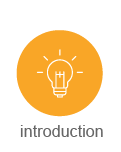elar
grade 1
grade 1
| 1.9 | Fiction. Students understand, make inferences and draw conclusions about the structure and elements of fiction and provide evidence from text to support their understanding. | ||
| 1.7 | Theme and Genre. Students analyze, make inferences and draw conclusions about theme and genre in different cultural, historical, and contemporary contexts and provide evidence from the text to support their understanding. | ||
| 1.11 | Sensory Language. Students understand, make inferences and draw conclusions about how an author’s sensory language creates imagery in literary text and provide evidence from text to support their understanding. | ||
| Tools to Know – Process | • | Tools to Know – Comprehension | |
| Ways to Show | • | Author’s Craft | |
| 1.14 | Expository. Students analyze, make inferences and draw conclusions about expository text and provide evidence from text to support their understanding. | ||
| 1.13 | Culture and History. Students analyze, make inferences and draw conclusions about the author’s purpose in cultural, historical, and contemporary contexts and provide evidence from the text to support their understanding. | ||
| 1.15 | Procedural Texts. Students understand how to glean and use information in procedural texts and documents. | ||
| Tools to Know – Process | • | Tools to Know – Comprehension | |
| Ways to Show | |||
| 1.8 | Poetry. Students understand, make inferences and draw conclusions about the structure and elements of poetry and provide evidence from text to support their understanding. | ||
| 1.7 | Theme and Genre. Students analyze, make inferences and draw conclusions about theme and genre in different cultural, historical, and contemporary contexts and provide evidence from the text to support their understanding. | ||
| 1.11 | Sensory Language. Students understand, make inferences and draw conclusions about how an author’s sensory language creates imagery in literary text and provide evidence from text to support their understanding. | ||
| Tools to Know – Process | • | Tools to Know – Comprehension | |
| Ways to Show | • | Author’s Craft | |
| 1.10 | Literary Nonfiction. Students understand, make inferences and draw conclusions about the varied structural patterns and respond by providing evidence from text to support their understanding. | ||
| 1.7 | Theme and Genre. Students analyze, make inferences and draw conclusions about theme and genre in different cultural, historical, and contemporary contexts and provide evidence from the text to support their understanding. | ||
| 1.11 | Sensory Language. Students understand, make inferences and draw conclusions about how an author’s sensory language creates imagery in literary text and provide evidence from text to support their understanding. | ||
| Tools to Know – Process | • | Tools to Know – Comprehension | |
| Ways to Show | • | Author’s Craft | |
| 1.17 | Writing Process. Students use elements of the writing process (planning, drafting, revising, editing, and publishing) to compose text. | ||
| 1.19 | Expository and Procedural Texts. Students write expository and procedural or work-related texts to communicate ideas and information to specific audiences for specific purposes. | ||
| Writing Process | • | Composition | |
| Revision | • | Editing | |

